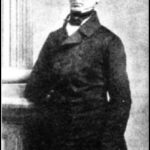Beethoven’s Fifth Symphony is unique and remarkable. Ever since its birth audiences are keen to solve the mystery, find the answer, point a finger to a meaning. Not possible! What is special about it? Everything! Let us look at some of the most important aspects that make this work so outstanding!
1. Drama
Beethoven put to paper his first ideas about a new symphony in 1803-1804, right after the Eroica Symphony. The Fifth is a different composition, but both share the same energy and something important: drama! This drama starts in the first movement (in fact right at the first notes!), dark and tense in C minor, ends in joyous triumph, in C major. This transition from dark to light knits the symphony together as the main concept.
2. Cathedral from a small rock
Beethoven uses the most simple thing possible, that is still comprehensible for the human ears, a four-note primal rhythm and builds a complete symphony out of it. This is not a theme, but a motif. Moreover, this little four-note rhythmic motif, instead of hiding and working in the background, now becomes the foreground and the essence of the music. The first three notes mimics forward movement, the fourth prolonged note stops this and brings in the feeling of doom.
This intensity and concentration of emotion in a musical piece was never done before!
3. Four-notes motif with a life of its own
The opening notes in Beethoven’s Fifth became the Fate-motif (like fate knocking on the door; in Beethoven’s case his hearing loss) and the whole Symphony later received the name, Fate Symphony. Whether it was a name given by Beethoven or Anton Schindler is another matter!
|Related: What is Beethoven’s Fifth Symphony called?
The Symphony of Fate and these notes grabbed the imagination of audiences and musicians ever since. The usual interpretation is that this symphony stands for the struggle of personal freedom, maybe against the inevitable fate or oppression of a tyranny. In Word War II the Fate-motif (and the letter V, as victory) became the worldwide representation of the Allied war efforts.
It is universally accepted that the opening of Beethoven’s Fifth Symphony is the most famous beginning in all of classical music!

4. Opening the door on Romanticism
In the early 1800s Beethoven began to feel the desire to leave the Viennese Classical tradition behind and start his new path. His first breakthrough composition in this new era was his Third Symphony, the Eroica. With the Fifth, he affirmed his dedication to this new path.
The Fifth Symphony is romantic in emotions, but at the same time still a classical composition. In fact, it is a landmark music, as it combines the formal perfection of the Classical era, with the emotional urgency of the Romantic.
5. Innovation in music
In order to bring to life this dramatic and contrasting musical idea, Beethoven needed more resources in the orchestra. In its last movement, it was the first major orchestral composition to use trombone, the high-pitched piccolo and the low-pitched contrabassoon. This gives the orchestra a wider range compared to classical compositions, expanding the musical dynamics and heightening the drama.
6. The transition from the third to the fourth movement
Beethoven wrote his composition without a stop between the third and fourth movements. Listeners will hear a thundering timpani part that leads us not only to the final movement, but also to a different tonality, into a hopeful C major. This is considered to be one of Classical music’s great transitions.
+1 Interstellar Fifth
NASA had launched space probes into interstellar space in 1977. Voyager 1 and Voyager 2, both carry a golden record, a 12-inch (30 cm) phonograph, that contains selected sounds and images from planet Earth. Among the sounds we (or rather hopefully aliens will) find the first movement of Beethoven’s Fifth Symphony. The Voyagers are still traveling deep space, even today.









